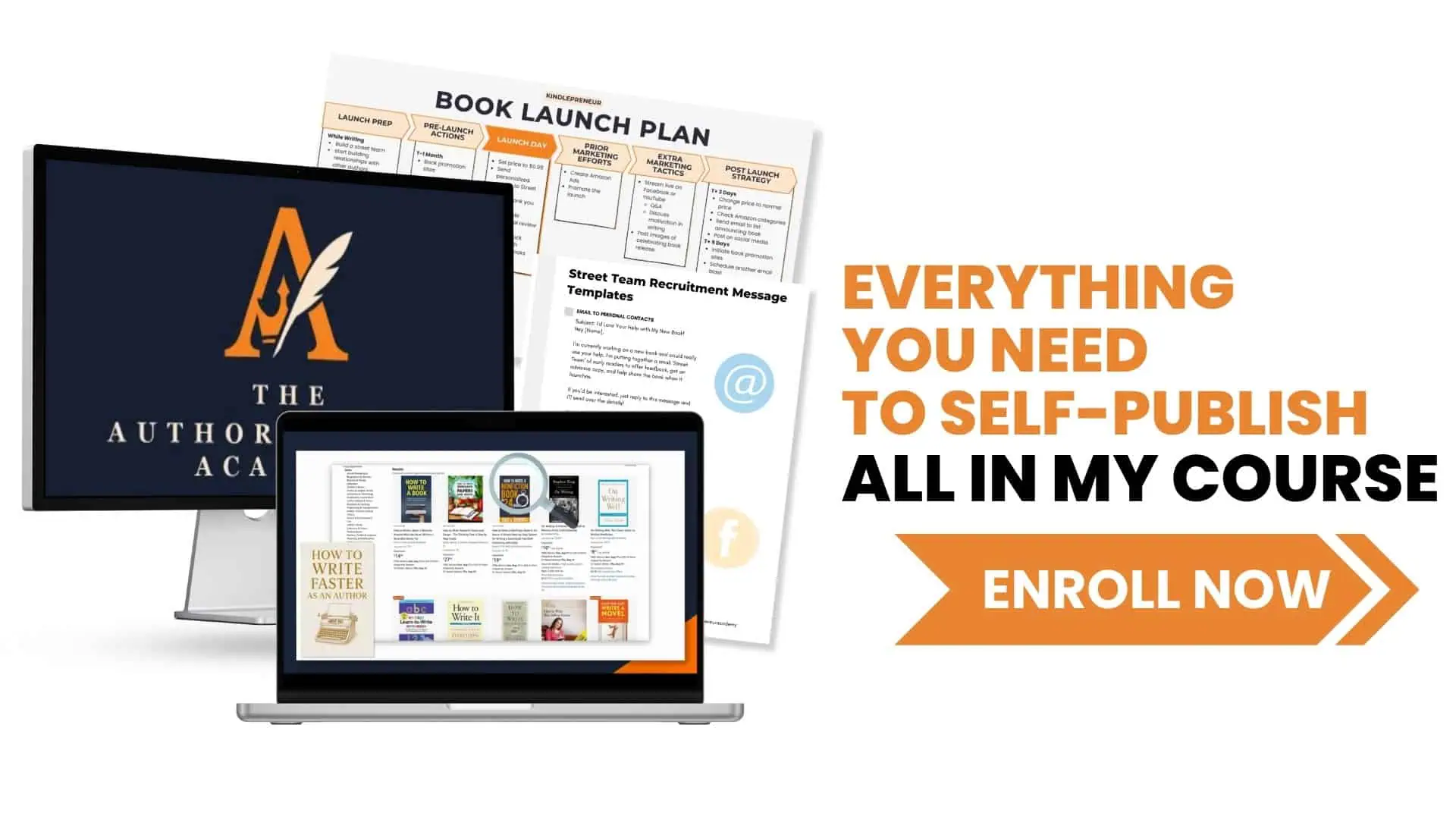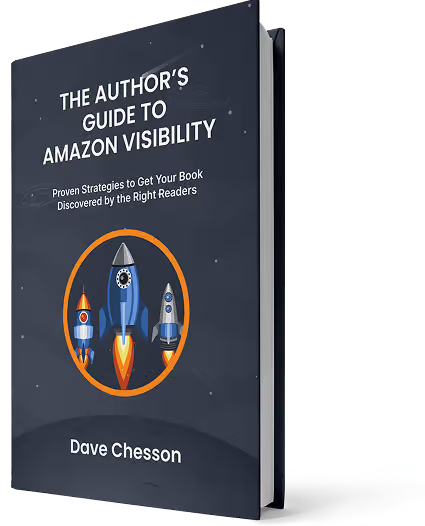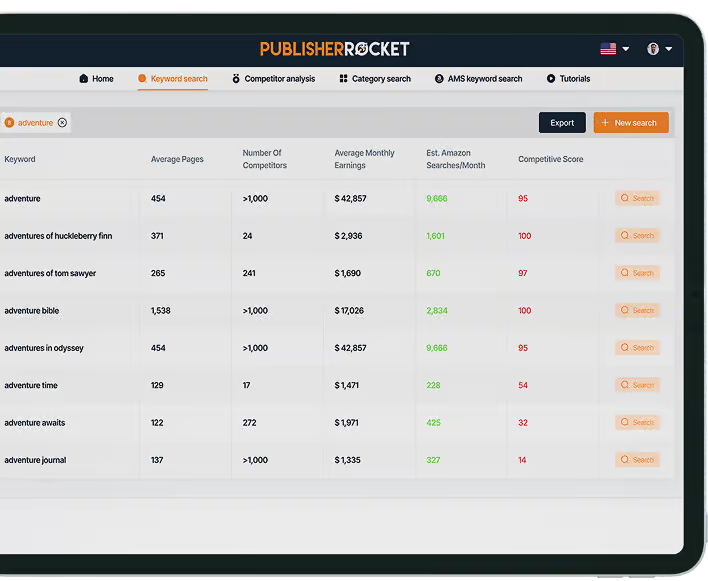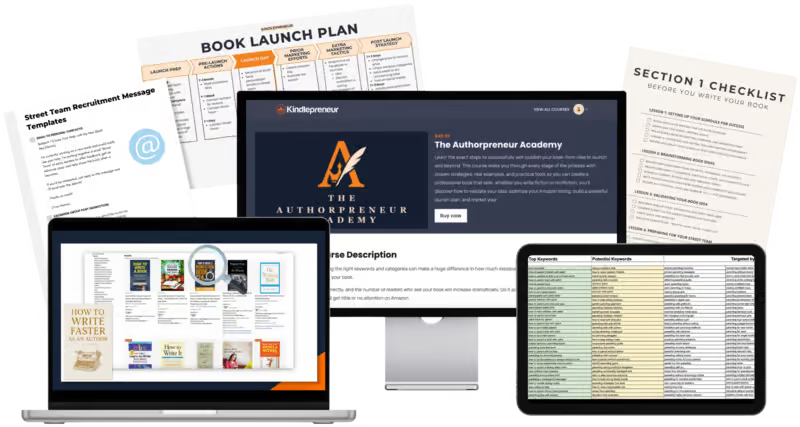AI is ramping up at a break-neck pace, and, like it or not, authors who are on the forefront of these technologies are the most likely to benefit going forward.
With that in mind, I’d like to take a look at one of the most powerful large language models (LLMs) out there: Antropic’s Claude.
Everyone reading this has probably heard of ChatGPT, the most well-known AI tool for writing, but Claude has proved itself to be just as useful, if not slightly superior, to ChatGPT when it comes to writing long-form content.
- What Claude is?
- How it differs from ChatGPT and what its strengths are
- How to write a book using Claude
- Some alternative resources to help learn AI

I've put together a list of prompts that you can use for just that purpose!
Check them out here:
Additionally, if you'd like to know more about how author can leverage AI, I'd invite you to check out my Story Hacker community, where we have dedicated teachers on various topics, including AI writing tools like this one.
What is Claude?
Claude is an artificial intelligence trained by Anthropic to be a more harmless LLM, one that is rooted in more human-aligned principles and centered on safety.
At least, that’s what they’re trying to be.
Like other large language models, some of Claude’s capabilities include writing text on a given topic, answering questions, developing ideas and brainstorming, translation, summarization, etc.
Claude is very similar to ChatGPT, but as we’ll see in a later section, has its differences too.
There are several different models of Claude, all of which are accessible via Anthropic’s official website: Claude.ai, which is Anthropic's own chatbot, similar to ChatGPT. There is a paid version called Claude Pro.
If you want more videos like this talking about the practical uses of AI in writing and marketing, be sure to subscribe to the channel.
How Much Does Claude Cost?
Claude Pro costs $20/month. This gives you throttled access to Claude in a chatbot format, similar to ChatGPT.
However, it's easy to run into usage limits on this plan. And as of this writing, there isn't a higher-tiered plan to use.
However, you can run Claude through other services on a pay-as-you-go basis, such as Anthropic's API, or OpenRouter. While this is pay-as-you-go, it has the advantage of being pretty much unlimited.
What Makes Claude Unique (Compared to ChatGPT)?
While AI assistants like ChatGPT also create content, Claude differs in a few key ways:
Claude is Much Better at Natural Language
Claude tends to sound a lot better in its natural language than the GPT models (for the most part). This makes it better suited for writing and content creation compared to ChatGPT's generalist approach.
In my experience, Claude writes more naturally and conversationally. Its casual tone and vocabulary mirror human speech much more effectively.
Claude Has a Massive Context Window
Claude can reference up to 200,000 tokens (~150,000 words) of context when generating text. This means it can remember enormous portions of text when writing. While this isn't as big of an advantage as it used to be, it's still a giant context window.
With more context, Claude is able to do a number of things that are useful for authors, including summarizing a book or what happens to a character in a book (good for developing a story bible), develop marketing material from your book, and remember past chapters as you are writing.
Claude Can Reference External Documents
Like many other chatbots, Claude lets you upload files to inform its writing. For instance, share your entire book outline so the AI will know where you are going with your story.
You can also provide supporting documents like:
- Background research materials
- Character info
- Sample chapters
- Transcripts of interviews or conversations
- A more extensive style guide
Claude can also read and summarize long PDFs so you don't have to, which is a useful feature.
How to Write a Book in Claude
My steps for how to write a book in Claude are similar to how you would do so in other AI programs, especially ChatGPT and the OpenAI Playground.
The only major difference is the type of output with Claude, which tends to write more legible prose, especially dialogue and humor. At least by comparison to ChatGPT.
That said, here is my 7-step system for writing with Claude. As always, you can use the AI for just one of these steps, or for all of them. Just pick where you have the most pain associated with the step, and use it for that.
For instance, I love doing the outlining, so I don’t use AI for that. But I’ve found it to be a great help in other areas.
Step 1: Brainstorm
Brainstorming is the creative groundwork for your novel. Here, you'll gather ideas, themes, and concepts that resonate with your story.
It's all about letting your imagination run wild and capturing the sparks of creativity.
Personally, I always start by brainstorming my premise and my ending, if I don’t know what they should be already.
Here are some prompt I’ve used:
Give me [NUMBER] high-concept pitches for a bestselling [GENRE] story with a unique twist, intriguing characters, and gripping emotional stakes.
Given the following premise and story information, give me [NUMBER] possible endings to this [GENRE] novel.
Step 2: Synopsis
The synopsis is a concise summary that encapsulates the main plot points of your novel. It helps you understand the flow of your story and ensures that the critical elements align cohesively.
You can expand upon your brainstormed premise and ending using a prompt like the following:
Given the following premise and story information, give me a highly detailed synopsis for a [GENRE] story in the traditional three act structure. Each act should be clearly labeled and should build toward the ending I've described.
Premise:
Ending:
Other Information:
Step 3: Characters and Worldbuilding
Characters are the heart of your story, and worldbuilding sets the stage on which they perform. There are many prompts you could use here, but here is a sample prompt for developing a character profile:
Write a character profile about the protagonist/antagonist/mentor of this novel:
[INSERT SYNOPSIS]
Here is what we know so far about this character: [INSERT CURRENT SUMMARY OF CHARACTER]
Include the following elements: [INSERT DESIRED ELEMENTS HERE]
Step 4: Outline
Outlining offers a structured view of your novel's framework. It can be as detailed or as broad as you need it to be, providing a plan that you can follow as you write.
From your synopsis, you can expand it further into a fully fleshed out outline:
Using the following synopsis, create a detailed summary of the story, fleshing out additional details, and breaking it into parts using the [OUTLINE METHOD OF CHOICE]: [INSERT SYNOPSIS HERE]
Step 5: Story Beats
When creating a story with AI, it helps to have an intermediate step between the outline and the actual writing. So fleshing out the outline into individual story beats (essentially a highly-detailed outline), can look something like this:
Take the following chapter summary, and generate a list of 12 highly detailed action beats for a script with additional STORY INFORMATION to fully flesh out the chapter. Make sure to always use proper nouns instead of pronouns.
[INSERT CHAPTER SUMMARY HERE]
Step 6: Style
A style prompt is possibly the most important prompt on this list, as it will affect how the prose sounds when you use AI to generate prose.
Style prompts can be lengthy, depending on how you use them. I've seen some that go on for hundreds of words, but here is one example of a shorter one that could work:
First person past point of view of [MAIN CHARACTER], show don't tell, deep point of view. Realistic dialogue. Stronger verbs. Lots of conflict, drama, and description. Avoid mushy descriptions/dialogue.
Step 7: Prose
Last but not least, it's time to create the prose prompt. Now many, if not most, authors will not be using AI for this step, and that's okay. In fact, I would say that AI is best used as a brainstorming tool.
However, there are many who DO want to write prose with AI, and I would do it something like this, using 2-3 story beats at a time.
Write 600 words of a chapter using the following details:
Genre: [ENTER GENRE HERE]
Tone: [ENTER TONE HERE]
Point of View: [ENTER POV/TENSE HERE]
Setting: [ENTER SETTING HERE]
Key Characters in This Scene: [ENTER CHARACTER DETAILS HERE]
Style: [ENTER STYLE HERE]
Story Beats to Cover: [INSERT STORY BEATS]
Additionally, I like to add some additional instruction that I wouldn’t normally use with ChatGPT, but is kind of necessary with Claude, since Claude isn’t as great at following directions. That prompt looks something like this:
All paragraphs should take place during the timeframe of the summary instead of adding new events. Focus on fully developing the given story beats rather than rushing to new plot points. End the scenes at the specified story beat rather than continuing further.
Other Resources
AI is an ever-shifting resource, and so there are a few additional resources that I would recommend if you want to stay on top of it.
The first, is my own YouTube channel, The Nerdy Novelist (a personal project, not associated with Kindlepreneur) where I provide almost daily videos about the goings on in AI.
The second is my membership: Story Hackers, where you can learn everything you need to know not just about writing with AI, but a more well-rounded overview of how to publish a book and the basic principles of good storytelling.
We have multiple classes each week where you can get tailored advice for your specific situation.
So, is Claude the Best Way to Write with AI?
While Claude is great, it has it's limitations.
First, the Claude Pro chatbot is not really built with authors in mind. While it's incredibly versatile and the natural language is good, I wouldn't rely on it to do anything tailored to the author experience.
Second, it really requires a lot of prompt engineering to figure out and get the most out of it. The prompts in this article will help, but they're just a starting point.
Thankfully, there are other programs that use what Claude gives you under the hood, but shapes it specifically for fiction authors.
One of those is called Sudowrite, and it's my recommendation for fiction authors who are just starting out experimenting with AI. It's the simplest and easiest to start with.
Now, I've done a full roundup of the best AI writing tools, but this one is carefully designed to cover tasks that authors often need, like brainstorming, character creation, and editing.
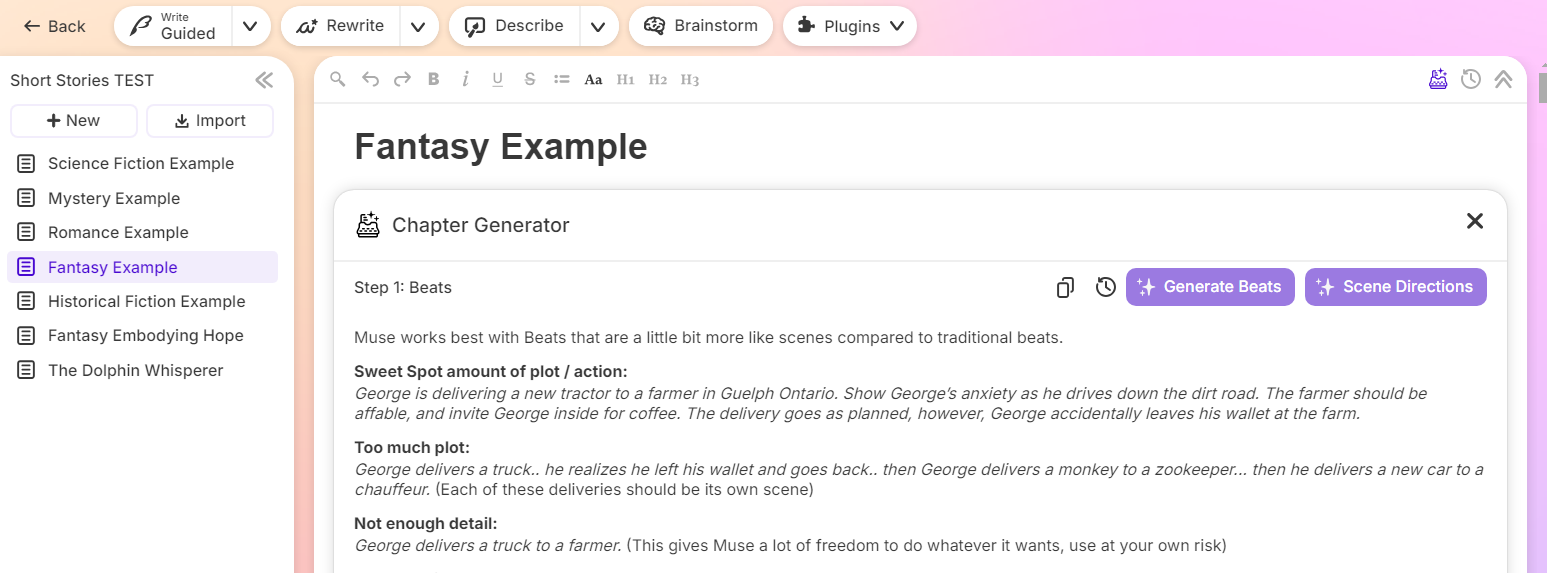
Sudowrite is packed with a lot of different features, to the point that I'm sure many of you can find something that works for you, and it's a great way to start experimenting with AI, even if you're still a little on the fence about it.
To help with that, if you use the link below, you can actually get 10,000 words for free when you sign up, meaning you can use those words to experiment further before you even pay for the tool. So check them out if you're interested.



